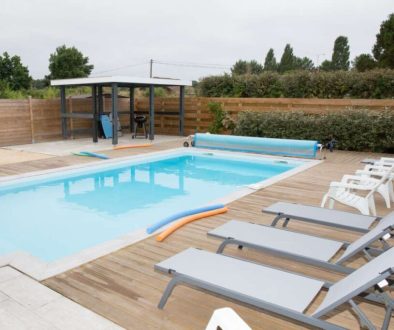Essential Tips for Investing in Mixed-Use Developments
Investing in mixed-use developments can offer unique opportunities for growth and diversification. Discover essential tips to navigate this complex market.
Essential Tips for Investing in Mixed-Use Developments
Investing in mixed-use developments has become increasingly popular among investors in real estate. These properties, which combine residential, commercial, and sometimes industrial spaces, present numerous advantages, including increased foot traffic, diversified income streams, and enhanced community engagement. However, navigating the mixed-use market can be complex. This blog post will provide essential tips for investors looking to enter the mixed-use development sector, addressing market trends, financing options, location considerations, and best practices for success.
Understanding the Mixed-Use Development Market
- The mixed-use development market has seen significant growth over the past decade, fueled by urbanization and a shift in living preferences towards walkable communities. In the United States alone, the market for mixed-use properties has grown substantially, with major cities embracing these types of developments.
- The appeal lies in their ability to bring together various functionalities in a single location, creating a vibrant atmosphere that attracts residents, businesses, and visitors alike. According to a report by the Urban Land Institute, mixed-use developments can yield a 15% higher return on investment compared to traditional single-use developments.
- For example, areas like the Battery in Atlanta and the Wharf in Washington, D.C., have successfully integrated residential, retail, and office spaces, further enhancing their appeal and market value.
Evaluating Financing Options
- Financing for mixed-use developments can be complex due to the varying property types involved. Investors must consider multiple financing sources, including traditional bank loans, private equity, and government programs aimed at revitalizing urban areas.
- An in-depth understanding of the property’s revenue sources is crucial. For instance, while residential units can provide stable cash flow, commercial spaces may offer higher returns but come with increased risks related to vacancy and tenant turnover.
- Investors should also explore tax incentives and grants that may be available for mixed-use developments, especially those promoting sustainable practices. For instance, projects that incorporate green building techniques may qualify for tax credits, further enhancing profitability.
- Case studies from successful mixed-use developments reveal that securing funding early on is critical; investors should prepare robust business plans demonstrating projected cash flows and market demand.
Choosing the Right Location
- The location of a mixed-use development is one of the most critical factors influencing its success. Investors should conduct thorough market research to identify high-demand areas where residential and commercial spaces can thrive.
- Factors to consider include population density, proximity to public transportation, and access to amenities such as schools, parks, and shopping centers. Areas experiencing revitalization or gentrification can offer significant upside potential.
- Incorporating input from local community leaders and stakeholders can provide insights into the needs and desires of the community, ensuring that the development aligns with local interests.
- A compelling example is the redevelopment of the High Line in New York City, where the transformation of an abandoned elevated railway into a public park spurred significant mixed-use development in the surrounding neighborhoods.
Engaging with the Community
- Successful mixed-use developments are often a product of strong community engagement. Investors should prioritize building relationships with local stakeholders, including residents, business owners, and government officials.
- Conducting community meetings and soliciting feedback on development plans can foster a sense of ownership and collaborative spirit among local residents. This engagement can help identify potential challenges and build community support for the project.
- Moreover, community-focused developments that include affordable housing, public spaces, and local businesses often receive more favorable treatment from city officials and can benefit from expedited approval processes.
- For example, the redevelopment of the South End neighborhood in Boston exemplifies how community engagement can lead to a project that meets the needs of both residents and businesses, resulting in a thriving mixed-use area.
Understanding Zoning and Regulatory Requirements
- Investors must navigate the complex zoning laws and regulatory requirements governing mixed-use developments. Each locality has its own set of regulations regarding land use, building codes, and occupancy limits.
- Understanding these requirements is essential to avoid costly delays and ensure compliance throughout the development process. Engaging with local planning departments early can provide clarity on zoning classifications, needed permits, and any potential hurdles.
- Additionally, staying informed about changes in local regulations and zoning laws can help investors adapt their plans to align with city goals and objectives, especially as urban landscapes evolve.
- It’s crucial to consult with legal experts who specialize in real estate to navigate these complexities effectively and ensure that all aspects of the development are compliant.
Designing for Functionality and Sustainability
- Design plays a pivotal role in the success of mixed-use developments. A well-thought-out design enhances functionality, promotes community interaction, and creates attractive spaces for residents and businesses.
- Incorporating sustainable design practices not only meets growing consumer demand for eco-friendly spaces but can also qualify developments for various incentives. Features such as energy-efficient systems, green roofs, and ample public spaces can significantly increase a property’s appeal.
- Engaging with architects and designers who specialize in mixed-use developments can help create an integrated design that fosters a sense of place and enhances the user experience.
- For instance, the East Side Access project in New York City illustrates how thoughtful design can facilitate connectivity among different uses, promoting a vibrant urban environment.
Managing the Development Process
- Successfully managing a mixed-use development project requires a clear project timeline, effective communication, and strong leadership. Investors should develop a comprehensive project management plan that outlines key milestones, responsibilities, and timelines.
- Engaging experienced contractors and project managers can help ensure that the project stays on track and within budget. Regular meetings and updates with the development team can foster collaboration and address any challenges that arise promptly.
- Utilizing project management software can aid in tracking progress, managing budgets, and collaborating with stakeholders, providing transparency throughout the development process.
- Ultimately, the efficient management of the development timeline can lead to timely completion and a successful launch, maximizing the return on investment.
Marketing and Leasing Strategies
- Once the mixed-use development is complete, implementing effective marketing and leasing strategies is crucial to attracting tenants and buyers. Developing a comprehensive marketing plan that highlights the unique features of the property can help generate interest.
- Utilizing online platforms, social media, and local advertising can increase visibility and reach potential tenants effectively. Highlighting the benefits of living and working in a mixed-use development, such as convenience and community, can resonate with target audiences.
- Additionally, offering introductory promotions or incentives can attract initial tenants and create buzz around the property. A well-thought-out leasing strategy that includes flexible terms and pricing can encourage businesses to consider occupying the space.
- Successful mixed-use developments often create a strong brand identity that reflects the unique character of the area, further enhancing marketing efforts.
Preparing for Future Trends
- The mixed-use development landscape continues to evolve, driven by changing consumer preferences and technological advancements. Investors should stay informed about emerging trends and adapt their strategies accordingly.
- The rise of remote work, for instance, is reshaping demand for commercial space, prompting developers to rethink their designs and offerings. Incorporating flexible workspaces and amenities catering to remote workers can enhance the appeal of mixed-use developments.
- As sustainability becomes a priority for consumers, developments that emphasize eco-friendly practices and community engagement are likely to see higher demand. Staying ahead of these trends can position investors for long-term success in the mixed-use market.
- Additionally, ongoing research into demographic shifts, economic conditions, and technological advancements can provide valuable insights for future development opportunities.
Conclusion
Investing in mixed-use developments presents a unique opportunity to capitalize on the growing demand for integrated living and working spaces. By understanding the market dynamics, engaging with the community, and implementing effective design and management strategies, investors can navigate this complex sector successfully. As urban environments continue to evolve, mixed-use developments will play a vital role in shaping vibrant and sustainable communities. By keeping these essential tips in mind, investors can position themselves for success in this dynamic market. Ready to explore mixed-use development opportunities? Contact Tower Business Brokers today to learn more!



